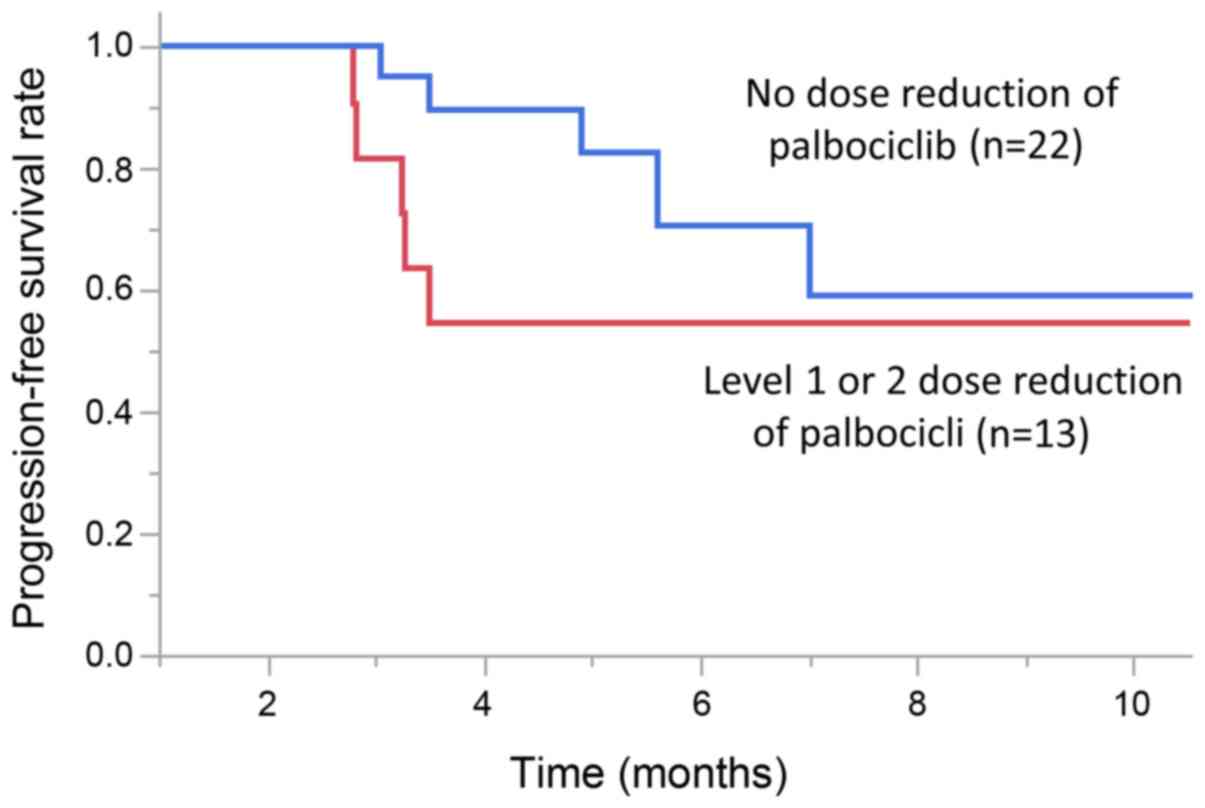Analysis of the selection of CDK4/6 inhibitors based on experience using palbociclib
- Authors:
- Published online on: November 1, 2019 https://doi.org/10.3892/br.2019.1248
- Pages: 253-256
-
Copyright: © Kikuchi et al. This is an open access article distributed under the terms of Creative Commons Attribution License [CC BY_NC 4.0].
Metrics:
Total
Views: 0 (Spandidos Publications: | PMC Statistics:
)
Total PDF Downloads: 0 (Spandidos Publications: | PMC Statistics:
)
Abstract
Palbociclib is a first‑in‑class potent oral inhibitor of cyclin‑dependent kinase (CDK)4/6 that was approved in the USA in 2015 and in Japan in 2017. Next‑generation abemaciclib was approved in the USA and Japan in 2018. The use of palbociclib results in a high frequency of bone marrow suppression, whereas abemaciclib induces a low frequency of bone marrow suppression, but a high incidence of diarrhea. However, the most appropriate uses for these CDK4/6 inhibitors remain unclear. In this study, we analyzed the efficacy and side‑effects associated with the use of palbociclib at our hospital and examined the suitability of palbociclib or abemaciclib. Among 35 patients who used palbociclib at our hospital from December, 2017 to December, 2018, the mean age was 39‑83 years. The patients receiving treatment with palbociclib with a combination of drugs included 20 patients (57%) receiving fulvestrant, 8 patients (23%) receiving letrozole, and 7 patients (20%) receiving fulvestrant + LH‑RH (leuprorelin). Fourteen patients (40%) had a history of receiving chemotherapy, and 21 patients (60%) had no history of receiving chemotherapy. The number of prior treatment regimens was 0‑11 (mean, 2.9). The initial dose of palbociclib was 125 mg for 29 patients (83%) and 100 mg for 6 patients (17%). Partial response, stable disease and progressive disease were achieved in 6 (17%), 19 cases (54%) and 10 cases (29%), respectively. Leukocytopenia was observed in 24 cases, neutropenia was observed in 26 cases, anemia was observed in 13 cases, thrombocytopenia was observed in 15 cases, fatigue was observed in 3 cases and itchy skin was observed in 1 case. When the number of neutrophils prior to palbociclib introduction was <3,000, neutropenia of grade 3 or higher was observed in all cases following palbociclib introduction. Thus, in order to avoid grade 3 or higher neutropenia and to maintain relative dose intensity, abemaciclib treatment may be considered for cases with neutrophils of <3,000 prior to the introduction of a CDK4/6 inhibitor.











